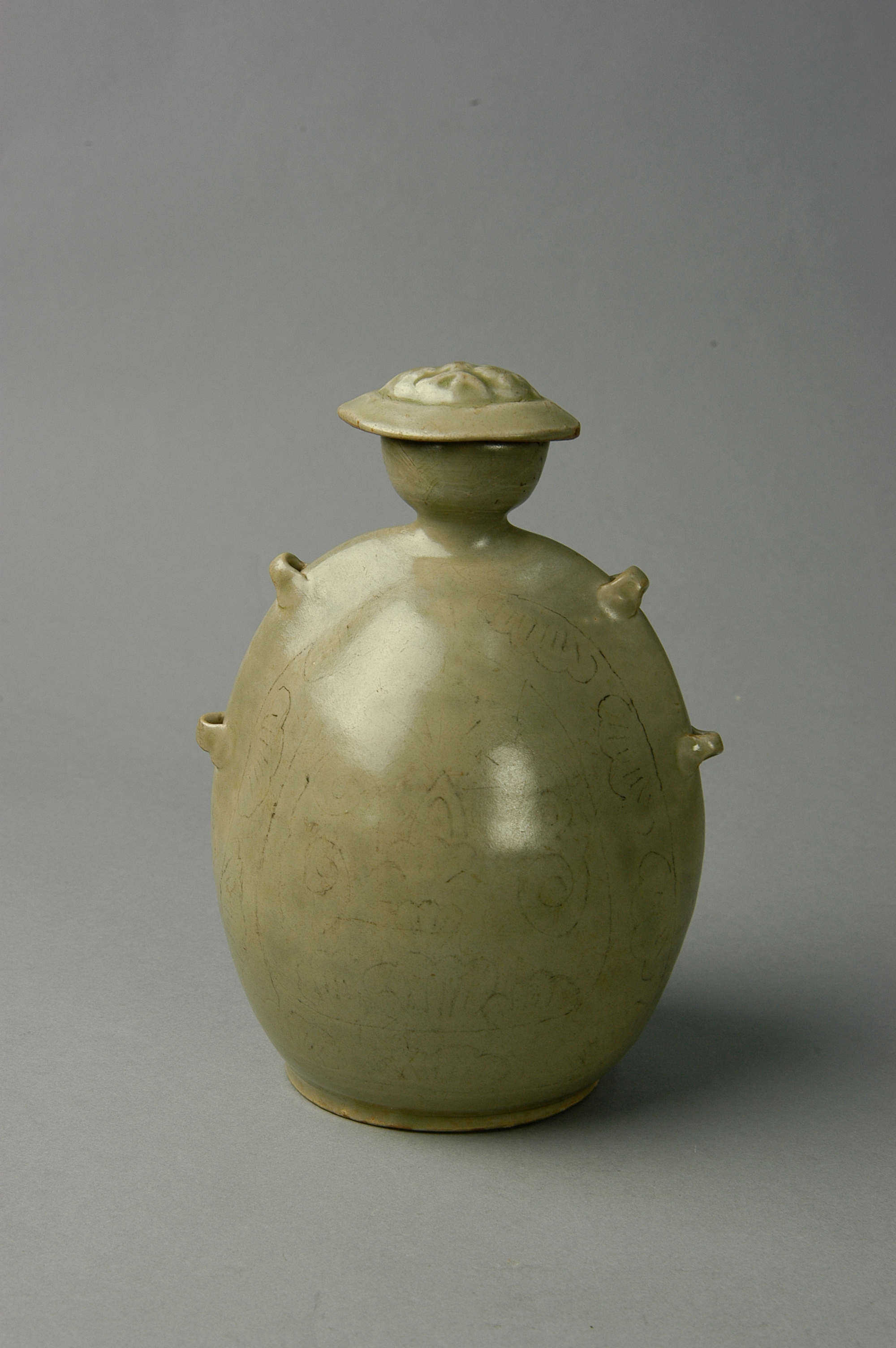Date: Tang Dynasty (618-907)
Provenance: Unearthed in Sanmenxia, Henan province, 1985
Measurements: Height: 21 cm, Bottom diameter: 9.2 cm
This porcelain pot was excavated from a Tang tomb in Sanmenxia, Henan province. The tomb's occupant, Zhang Hongqing, hailed from Qinghe (now part of Hebei province) and later relocated to Gantang in Shanzhou (now part of Henan province), where he served in the military.
The overall shape of the pot imitates the leather bagging pot commonly used by nomadic tribes, featuring a handleless cup-like form, a small oval mouth, with a mushroom-shaped lid on top. It boasts a short and slender neck, with raised ridges on both shoulders resembling stitched leather. On each side, under the shoulders, two pairs of molded knobs are present, facilitating the attachment of straps for convenient carrying.
The lid's top is adorned with stamped decorative patterns, while the front and back of the belly showcase engraved floral patterns. Below the knobs, there are decorations resembling banana leaves. The simple yet vivid engraved floral patterns exude a simple and elegant charm.
The pot is coated with a light celadon glaze, imparting a smooth and delicate texture akin to jade. This Yue ware, imitating a leather bagging pot, stands apart from its silver, white, or brown-glazed counterparts associated with the robust northern aesthetic, resembling instead a gentle and refined southern feminine aesthetic. The tranquil and reserved celadon artifact evokes the hues of misty southern lakes and mountains.

